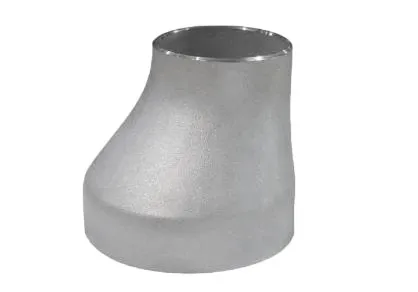-
Cangzhou Yulong Steel Co., Ltd.
-
Phone:
+86 13303177267 -
Email:
admin@ylsteelfittings.com
- English
- Arabic
- Italian
- Spanish
- Portuguese
- German
- kazakh
- Persian
- Greek
- French
- Russian
- Polish
- Thai
- Indonesian
- Vietnamese
- Zulu
- Korean
- Uzbek
- Hindi
- Serbian
- Malay
- Ukrainian
- Gujarati
- Haitian Creole
- hausa
- hawaiian
- Hebrew
- Miao
- Hungarian
- Icelandic
- igbo
- irish
- Japanese
- Javanese
- Kannada
- Khmer
- Rwandese
- Afrikaans
- Albanian
- Amharic
- Armenian
- Azerbaijani
- Basque
- Belarusian
- Bengali
- Bosnian
- Bulgarian
- Catalan
- Cebuano
- China
- China (Taiwan)
- Corsican
- Croatian
- Czech
- Danish
- Esperanto
- Estonian
- Finnish
- Frisian
- Galician
- Georgian
- Kurdish
- Kyrgyz
- Lao
- Latin
- Latvian
- Lithuanian
- Luxembourgish
- Macedonian
- Malgashi
- Malayalam
- Maltese
- Maori
- Marathi
- Mongolian
- Myanmar
- Nepali
- Norwegian
- Norwegian
- Occitan
- Pashto
- Dutch
- Punjabi
- Romanian
- Samoan
- Scottish Gaelic
- Sesotho
- Shona
- Sindhi
- Sinhala
- Slovak
- Slovenian
- Somali
- Sundanese
- Swahili
- Swedish
- Tagalog
- Tajik
- Tamil
- Tatar
- Telugu
- Turkish
- Turkmen
- Urdu
- Uighur
- Welsh
- Bantu
- Yiddish
- Yoruba

Oct . 12, 2024 01:15 Back to list
API 5L PSL2 Pipe Specifications and Applications for Oil and Gas Industry
Understanding API 5L PSL2 Pipe Specifications and Applications
The API 5L PSL2 pipe is a crucial element in the oil and gas industry, specifically designed to transport oil, natural gas, and other fluids effectively. The American Petroleum Institute (API) established the API 5L specification to standardize the quality and performance of line pipes, ensuring safety and efficiency in various applications. The PSL2 (Product Specification Level 2) designation indicates pipes that meet higher quality requirements, making them suitable for more demanding applications.
Composition and Manufacturing Process
API 5L PSL2 pipes are often made from carbon steels, which provide excellent durability and strength. The chemical composition typically includes key elements such as carbon, manganese, phosphorus, sulfur, and silicon, which contribute to the pipe's overall properties. The manufacturing process generally involves hot rolling or cold forming methods.
The pipes undergo rigorous testing to ensure they meet the defined standards. These tests evaluate factors such as tensile strength, yield strength, elongation, and Charpy impact properties. The goal is to ensure that the pipes can withstand harsh environments and extreme conditions experienced in the transportation of hydrocarbons.
Specifications and Standards
API 5L provides various specifications for PSL2 pipes, including different grades such as L245, L290, L360, L390, L415, and L450. Each grade indicates the minimum yield strength of the pipe in megapascals (MPa). For example, a grade L360 pipe has a minimum yield strength of 360 MPa. The specifications also outline dimensions, tolerances, and coating requirements, ensuring that the pipes meet industry standards.
Pipes manufactured under PSL2 specifications are required to be tested for their structural integrity and durability. This includes not only the traditional mechanical tests but also non-destructive testing methods such as ultrasonic testing to identify any internal flaws. These stringent quality measures ensure that the pipes perform reliably under pressure and stress during operation.
api 5l psl2 pipe

Applications of API 5L PSL2 Pipe
The API 5L PSL2 pipes are predominantly used in the transportation of oil, natural gas, and other liquids over long distances. They are essential in the construction of pipelines that connect oil fields to refineries, terminals, and end-users. One of the standout features of these pipes is their robust nature, allowing them to be laid underground or submerged underwater without compromising their integrity.
Beyond oil and gas applications, API 5L PSL2 pipes are also utilized in various industries, including water treatment, chemical processing, and infrastructure development. Their versatility means they can be adapted for use in a wide range of pressurized systems, making them invaluable for ensuring the safe and efficient transportation of fluids.
Advantages of API 5L PSL2 Pipe
One of the primary advantages of API 5L PSL2 pipes is their high strength-to-weight ratio, which allows for efficient transportation and handling. The pipes are designed to endure high pressures, minimizing the risk of leaks and ruptures. Furthermore, the standardization of these pipes ensures compatibility with various fittings and components used in pipeline infrastructure, facilitating easier construction and maintenance.
The corrosion resistance of these pipes can also be enhanced through various coating options, extending their service life even in challenging environments such as coastal areas or regions with harsh weather conditions.
Conclusion
In summary, API 5L PSL2 pipes play a pivotal role in the oil and gas industry and beyond, providing a reliable solution for fluid transportation. Their stringent manufacturing and testing standards ensure they meet the highest quality requirements, making them suitable for various applications. As industries continue to evolve, the demand for API 5L PSL2 pipes will likely increase, driven by the need for efficient and safe transportation of essential resources. Ultimately, understanding these specifications and their implications is crucial for professionals in the field, ensuring that infrastructure projects are completed successfully and sustainably.
Latest news
-
ANSI 150P SS304 SO FLANGE
NewsFeb.14,2025
-
ASTM A333GR6 STEEL PIPE
NewsJan.20,2025
-
ANSI B16.5 WELDING NECK FLANGE
NewsJan.15,2026
-
ANSI B16.5 SLIP-ON FLANGE
NewsApr.19,2024
-
SABS 1123 FLANGE
NewsJan.15,2025
-
DIN86044 PLATE FLANGE
NewsApr.19,2024
-
DIN2527 BLIND FLANGE
NewsApr.12,2024
-
JIS B2311 Butt-Welding Fittings LR/SR 45°/90° /180°Seamless/Weld
NewsApr.23,2024











